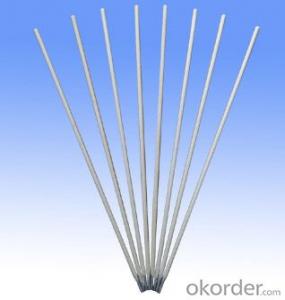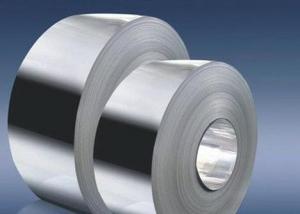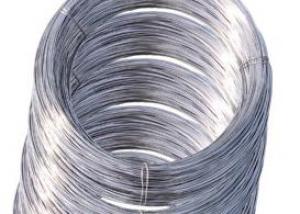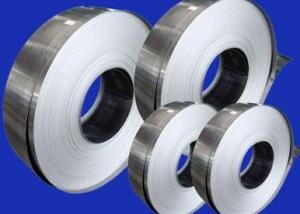Carbon Steel Welding Electrodes AWS E6011
- Loading Port:
- Qingdao
- Payment Terms:
- TT or LC
- Min Order Qty:
- 10 m.t.
- Supply Capability:
- 100 m.t./month
OKorder Service Pledge
OKorder Financial Service
You Might Also Like
Carbon Steel Welding Electrodes AWS E6011
Specifications for Carbon Steel Welding Electrodes
1) Specially for Vertical-down welding
2) Perfect welding performance.
3)Operating current: 2.5MM:30-50,32.MM:70-100,4.0MM:90-140, 5.0MM: 150-200
4)Diameter:2.5mm-5.0mm
5)Material:Carbon Steel
6)Length:300-400mm
7)Delivery Time: 15-30 days after receiving L/C or pre-paid
8)Detail Package:All products will be standard export package, will be wooden boxes or bundled by steel strips, or as per customer's requirement
Advantages for Carbon Steel Welding Electrodes
E6011 is a high cellulose potassium type welding rod for mild steel.
It is suitable for vertical -down welding and lap welding for sheet structures.
Such as smoke pipes, wind pipes ,oil tanks of teansformer, outside cover of vehicles.
Chemical Composition of Deposited Metal(%)
| C | Mn | Si | S | p | Ni | Cr | Mo | V |
| ≤0.2 | ≤1.2 | ≤1.0 | ≤0.035 | ≤0.040 | ≤0.3 | ≤0.2 | ≤0.3 | ≤0.08 |
FAQ
Q: How’s your service?
A:1. Offer customers 24/7 service, whenever you need us, we are always here for you.
2. Immediate response. Your any inquiry will be replied within 24 hours.
3. Support small order quantity, for the first time cooperation customers, we can send you less quantity for trial order.
4. Support third party inspection company to inspect and check the quality and quantity before delivery.
Picture:
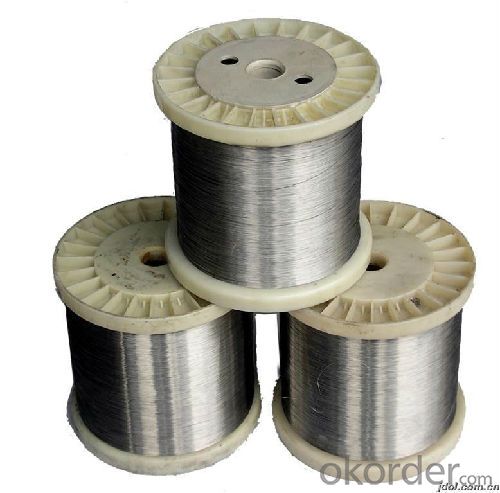
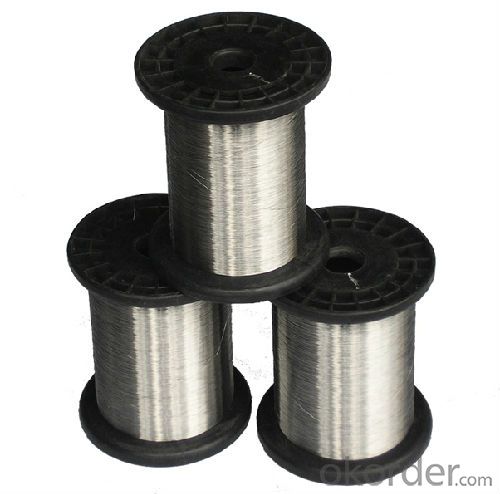
- Q:What are the different types of stainless steel wire rope constructions?
- There exist various stainless steel wire rope constructions, each possessing its distinct characteristics and uses. Some commonly encountered types are as follows: 1. 1x19 Construction: Comprising 19 wires twisted together into a single strand, with one central wire enveloped by six strands, each consisting of two wires. It offers exceptional strength and limited flexibility, making it perfect for applications necessitating high tensile strength, for instance, standing rigging on sailboats. 2. 7x7 Construction: This construction incorporates seven strands, with each strand composed of seven wires twisted together. It provides satisfactory flexibility and moderate strength, rendering it suitable for applications such as cable railing, garage door cables, and winch lines. 3. 7x19 Construction: Resembling the 7x7 construction, this type of wire rope includes seven strands, each consisting of 19 individual wires. It offers improved flexibility and heightened strength in comparison to the 7x7 construction, thus making it suitable for a wide range of applications, including lifting slings, guy wires, and zip lines. 4. 6x19 Construction: This construction consists of six strands, with each strand comprising 19 wires twisted together. It offers good flexibility and high strength, making it appropriate for applications like crane hoist ropes, winch lines, and overhead lifting. 5. 6x36 Construction: This construction is characterized by six strands, with each strand consisting of 36 individual wires twisted together. It provides excellent flexibility and high breaking strength, rendering it ideal for applications that necessitate both flexibility and strength, for example, elevator ropes, wire rope slings, and tow lines. 6. 1x7 Construction: This construction is composed of a single strand twisted together from seven wires. It offers high tensile strength and limited flexibility, making it suitable for applications that require maximum strength, such as control cables and wire rope fencing. These examples showcase only a fraction of the stainless steel wire rope constructions that are available. The choice of construction relies on the specific requirements of the application, encompassing strength, flexibility, and durability.
- Q:What are the different types of stainless steel wire used in heat exchangers?
- There are several different types of stainless steel wire that are commonly used in heat exchangers. These include: 1. Austenitic stainless steel wire: This type of stainless steel is the most widely used in heat exchangers due to its excellent corrosion resistance and high temperature resistance. It contains high levels of chromium and nickel, which provide the material with its corrosion resistance properties. 2. Ferritic stainless steel wire: Ferritic stainless steel wire is another common choice for heat exchangers. It has a higher carbon content compared to austenitic stainless steel, which provides it with improved strength and heat resistance. However, it has lower corrosion resistance than austenitic stainless steel. 3. Duplex stainless steel wire: Duplex stainless steel wire is a combination of both austenitic and ferritic stainless steel, offering a balance between the two types. It provides good corrosion resistance and high strength, making it suitable for demanding heat exchanger applications. 4. Martensitic stainless steel wire: Martensitic stainless steel wire is known for its high strength and hardness. It is often used in heat exchangers that require excellent mechanical properties, but it has lower corrosion resistance compared to other stainless steel types. The choice of stainless steel wire for heat exchangers depends on various factors, including the operating environment, temperature, and specific requirements of the application. Each type of stainless steel wire has its own unique properties, allowing heat exchanger manufacturers to select the most appropriate material for their specific needs.
- Q:What are the different types of stainless steel wire rope end fittings available?
- There are several types of stainless steel wire rope end fittings available, including thimbles, sleeves, clips, hooks, and eyelets. These fittings are designed to secure and terminate wire ropes in various applications, providing durability, strength, and resistance to corrosion.
- Q:Can stainless steel wire be used for wire rope sheaves?
- Yes, stainless steel wire can be used for wire rope sheaves. Stainless steel is known for its excellent corrosion resistance, durability, and strength, making it a suitable material for various applications, including wire rope sheaves. Stainless steel wire rope sheaves are commonly used in industries such as marine, oil and gas, construction, and lifting equipment, where they are exposed to harsh environments or corrosive substances. The corrosion resistance of stainless steel helps prevent rust and degradation, ensuring the longevity and reliability of wire rope sheaves. Additionally, stainless steel wire offers high tensile strength, providing the necessary load-bearing capacity for wire rope systems. Overall, using stainless steel wire for wire rope sheaves is a practical choice for ensuring optimal performance and longevity in various industrial applications.
- Q:304 stainless steel wire drawing why rust?? long rust what is the reason?
- 1. stainless steel products have to be passivation process, the surface free iron removal, rust prevention will be good. 304, only to clean the workpiece, soaked in 45% (volume ratio) nitric acid about 30-60min., that is passivation effect2. wire drawing can not contain alumina and other metal compounds, to avoid contamination of stainless steel surface, will affect corrosion resistance and passivation effect3., stainless steel cutting tools, wheels, grinding materials can not share with other metal work
- Q:What are the different types of stainless steel wire for different levels of flexibility?
- There are several different types of stainless steel wire available, each offering varying levels of flexibility to suit different applications. The most common types include: 1. Hard Drawn Stainless Steel Wire: This type of wire is known for its high tensile strength and minimal flexibility. It is ideal for applications where rigidity and durability are required, such as springs, mechanical components, or fencing. 2. Spring Temper Stainless Steel Wire: This wire is heat-treated to achieve a balance between strength and flexibility. It offers moderate flexibility while still maintaining good tensile strength. It is often used in applications like orthodontic wires, fishing lines, or mechanical springs. 3. Soft Temper Stainless Steel Wire: This wire is annealed to maximize flexibility while sacrificing some strength. It is commonly used in applications where flexibility is crucial, such as wire ropes, weaving, or jewelry making. 4. Stainless Steel Braid Wire: This wire consists of multiple strands braided together, providing increased flexibility and resistance to kinking or twisting. It is commonly used in applications like hoses, cables, or electrical conductors. 5. Stainless Steel Welding Wire: Specifically designed for welding applications, this wire has a precise chemical composition to ensure proper fusion and strong weld joints. It is available in various grades and diameters to suit different welding processes and materials. Each of these types of stainless steel wire has its own unique characteristics, making them suitable for specific purposes. When selecting the appropriate wire for a particular application, factors such as flexibility requirements, strength, corrosion resistance, and environmental conditions should be considered.
- Q:Can stainless steel wire be used for wire drawing dies?
- Certainly, wire drawing dies can utilize stainless steel wire. Stainless steel, a highly adaptable material praised for its robustness, resistance to corrosion, and exceptional strength, proves to be fitting for a multitude of applications, one of which being wire drawing dies. These dies serve the purpose of diminishing the wire's diameter through the act of pulling it through a die hole. Stainless steel wire drawing dies effectively withstand the forces and friction associated with this procedure. Moreover, they are renowned for their enduring performance and capacity to generate wire of superior quality, consistently maintaining precise dimensions.
- Q:Is stainless steel wire resistant to chemical exposure?
- Stainless steel wire exhibits a high level of resistance against chemical exposure. Its remarkable ability to resist corrosion is well-known, rendering it suitable for a wide range of applications involving contact with diverse chemicals. A protective oxide layer naturally forms on the surface of stainless steel, effectively preventing the wire from reacting with chemicals and undergoing corrosion. The remarkable resistance to chemical exposure makes stainless steel wire the preferred choice in various industries, including chemical processing, pharmaceuticals, food and beverage, among others. Nonetheless, it is vital to acknowledge that the resistance of stainless steel to specific chemicals can be influenced by its grade and composition. Therefore, it is crucial to carefully select the appropriate stainless steel grade, taking into account the type of chemical exposure it will encounter.
- Q:What are the different types of stainless steel wire springs used in the electronics industry?
- In the electronics industry, there are several types of stainless steel wire springs commonly used due to their excellent electrical conductivity, corrosion resistance, and durability. Some of the different types of stainless steel wire springs used in the electronics industry include: 1. Compression Springs: These springs are widely used in electronic devices to provide resistance and absorb shock or pressure. They are commonly found in connectors, switches, and various electronic assemblies. 2. Torsion Springs: Torsion springs are used to provide rotational force or torque in electronic devices. They are often found in various mechanisms like switches, relays, and circuit breakers, where rotational movement is required. 3. Extension Springs: Extension springs are used in electronic devices where linear force needs to be applied. They are commonly found in battery contacts, connectors, and other devices that require tension to hold components or provide a restoring force. 4. Constant Force Springs: These springs provide a constant force over a specific range of extension. They are frequently used in applications such as retractable cords, cable management systems, and electronic devices where a consistent force is required. 5. Wave Springs: Wave springs are used in electronic devices where space is limited. They provide a high load capacity in a compact design and are commonly used in miniature electronic connectors, switches, and various microelectronic assemblies. 6. Wire Form Springs: Wire form springs are versatile and can be custom-designed to meet specific requirements in the electronics industry. They are used in a wide range of applications such as clips, contacts, connectors, and various mechanical assemblies. 7. Battery Springs: These springs are specifically designed for use in battery compartments or battery contacts. They ensure proper electrical contact, maintain a secure fit, and provide a reliable power connection in electronic devices that use batteries. It is important to note that the selection of the appropriate stainless steel wire spring depends on the specific requirements of the electronic device, including the desired force, space limitations, electrical conductivity, corrosion resistance, and environmental conditions.
- Q:What are the different wire surface passivation options available for stainless steel wire?
- Stainless steel wire offers several options for passivation, each with its own benefits and uses. Common methods include: 1. Chemical Passivation: Acid-based solutions are used to eliminate impurities and create a protective oxide layer on the wire's surface. This prevents corrosion and enhances resistance to environmental factors. 2. Electrochemical Passivation: Through an electrochemical process, iron is removed from the stainless steel surface, promoting the formation of a chromium-rich oxide layer. This method improves corrosion resistance and enhances the wire's appearance. 3. Mechanical Passivation: Also known as abrasive passivation, this technique involves using abrasive materials or mechanical methods to eliminate contaminants from the wire's surface. It enhances cleanliness and prepares the wire for subsequent passivation processes. 4. Nitric Acid Passivation: This widely-used method involves applying a nitric acid solution to the stainless steel wire surface. It eliminates free iron and other impurities, facilitating the formation of a protective oxide layer. 5. Citric Acid Passivation: This method utilizes citric acid-based solutions to remove contaminants from the stainless steel wire surface. It is considered more environmentally friendly than nitric acid passivation and offers similar corrosion resistance properties. 6. Pickling: Pickling entails immersing the stainless steel wire in an acid solution, typically a mixture of nitric and hydrofluoric acid. This process eliminates scale, oxide layers, and other impurities, resulting in a clean and corrosion-resistant wire surface. The choice of passivation method depends on factors such as desired corrosion resistance, environmental considerations, and application requirements. Consulting with experts or industry professionals is crucial to determine the most suitable passivation option for a specific stainless steel wire application.
1. Manufacturer Overview |
|
|---|---|
| Location | |
| Year Established | |
| Annual Output Value | |
| Main Markets | |
| Company Certifications | |
2. Manufacturer Certificates |
|
|---|---|
| a) Certification Name | |
| Range | |
| Reference | |
| Validity Period | |
3. Manufacturer Capability |
|
|---|---|
| a)Trade Capacity | |
| Nearest Port | |
| Export Percentage | |
| No.of Employees in Trade Department | |
| Language Spoken: | |
| b)Factory Information | |
| Factory Size: | |
| No. of Production Lines | |
| Contract Manufacturing | |
| Product Price Range | |
Send your message to us
Carbon Steel Welding Electrodes AWS E6011
- Loading Port:
- Qingdao
- Payment Terms:
- TT or LC
- Min Order Qty:
- 10 m.t.
- Supply Capability:
- 100 m.t./month
OKorder Service Pledge
OKorder Financial Service
Similar products
New products
Hot products
Related keywords

